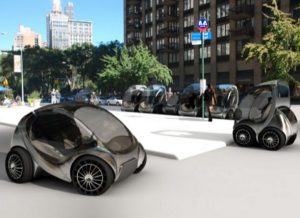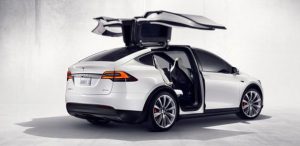by Jon LeSage, editor and publisher, Green Auto Market
Here’s my take on the 10 most significant and interesting occurrences during the past week…….
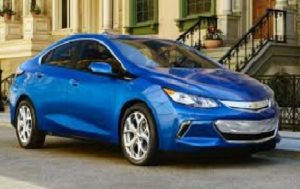 Increasing EV sales: How will U.S. new vehicle sales go from less than 1% to more than 10% plug-in electric vehicle sales? Automaker speaker panelists at EVS29 in Montreal addressed the issues. Robert Langford, American Honda Motor Co. manager of electric vehicle sales, is enthusiastic about the new products coming out of the pipeline but warns that charging stations need to be increase at multi-unit residential complexes; and that charging stations need to become more compatible. Britta Gross, director of advanced vehicle commercialization policy at General Motors thinks that automakers need to spend more on marketing to communicate the benefits of PEV ownership, whether that be by helping the planet or spending less on gasoline. If you don’t accompany in infrastructure of vehicle incentive program with an outreach campaign, you lose the battle, she said. Aaron Cohen, Audi of America’s general manager of electric vehicle strategy, thinks there needs to be coordination by key players – carmakers, electric utilities, charging companies, and federal, state and local governments. Brendan Jones, previously with Nissan and now with EVgo, talked about how challenging it can be get auto dealers and their sales consultants to spend more of their time selling EVs.
Increasing EV sales: How will U.S. new vehicle sales go from less than 1% to more than 10% plug-in electric vehicle sales? Automaker speaker panelists at EVS29 in Montreal addressed the issues. Robert Langford, American Honda Motor Co. manager of electric vehicle sales, is enthusiastic about the new products coming out of the pipeline but warns that charging stations need to be increase at multi-unit residential complexes; and that charging stations need to become more compatible. Britta Gross, director of advanced vehicle commercialization policy at General Motors thinks that automakers need to spend more on marketing to communicate the benefits of PEV ownership, whether that be by helping the planet or spending less on gasoline. If you don’t accompany in infrastructure of vehicle incentive program with an outreach campaign, you lose the battle, she said. Aaron Cohen, Audi of America’s general manager of electric vehicle strategy, thinks there needs to be coordination by key players – carmakers, electric utilities, charging companies, and federal, state and local governments. Brendan Jones, previously with Nissan and now with EVgo, talked about how challenging it can be get auto dealers and their sales consultants to spend more of their time selling EVs.- Mercedes e-brand: Daimler AG is considering creating a new brand for the upcoming Mercedes electric vehicles. The report comes from German publication Handelsblatt, and coincides with what Ola Kallenius, Mercedes’ sales and marketing director in Britain, told Autocar – that the company is considering creating an eco-focused sub-brand to rival the likes of BMW’s i electric vehicle division. “The launch of the electric car brand is planned for September in Paris, where Mercedes-Benz wants to present a SUV model which is based on the current GLC model,” sources told Handelsblatt, and that it should go on sale next year.
- Notice on email address change for Green Auto Market: Please change your email setting to accept this newsletter from my email address jon@jonlesageconsulting.com. The previous Gmail address used in the “From” section, jlesage378@gmail.com, had to be changed over to another address on Constant Contact. That comes from a new Google policy on its Gmail service for email authentication protocol to prevent spam.
- North American EV sales: Navigant Research predicts a large increase in North American plug-in electric vehicle sales – 62% this year over last year, nearing 200,000 units sold. Next year will likely boost the market by around 60%, and then nearly double the market in 2018. Navigant expects it to be driven by the Tesla Model X, the second-generation Volt, Chevrolet Bolt, Prius Prime, and Mitsubishi Outlander PHEV. The boost in 2017-2018 sales is expected to come from introduction of the Tesla Model 3.
- Dragon Racing team: Faraday Future announced it is now the title sponsor and core technical partner to the Dragon Racing team. Under the new team name Faraday Future Dragon Racing, the partners will compete in the third season of the Formula E championship running from 2016 to 2017. After competing in Season 3, the team will start using Faraday components, which could include motors, gearboxes, and the FF Echelon Inverter, the same inverter that will be installed on every Faraday Future vehicle that comes to market in the future.
- Tesla chargers at gas stations: Tesla Motors will be installing charging stations at gas stations through a partnership with Sheetz gasoline. Sheetz operates hundreds of retail outlets across six states, mostly in the mid-Atlantic region. These may be Supercharger or Level 2 chargers, or a combination of both. That announcement followed a previous, recent news item about Tesla setting up a retail outlet with Nordstrom starting at a test site in Los Angeles. Following the Sheetz gas station announcement, Ruby Tuesday restaurants announced that it has begun installing a series of Tesla Supercharges at its locations along important routes across the country. The first one opened up at the Ruby Tuesday location in Miner, Miss.
- Vision Next 100: BMW is celebrating its 100th anniversary this year with futuristic concept cars for its BMW brand and its Rolls-Royce and Mini brands as well. All three wear the “Vision Next 100” name, referencing BMW’s intent to predict the direction car design will take over the next century. The Rolls-Royce Vision Next 100 concept is expected to combine an electric powertrain and autonomous driving with some of the British luxury carmaker’s more traditional design elements.
- Carbon rules for biodiesel and renewable diesel: California Air Resources Board released a set of carbon intensity pathways June 30 for biodiesel and renewable diesel pathways. It’s being certified under the readopted low carbon fuel standard (LCFS) regulation using the CA-GREET 2.0 model. These pathways include both new applications and requests to have legacy pathways, or pathways adopted under the earlier LCFS rule, recertified, according to CARB.
- Why ExxonMobil may be supporting carbon taxes: ExxonMobil is lobbying for a revenue-neutral carbon tax in Congress. Some of it may be coming from its transformation in recent years to being the leading producer of natural gas in the U.S.; the oil giant is in a strong position to supply more natural gas to electric utilities to help them reduce their coal consumption. It may also be related to a scandal in the past year about ExxonMobil having known about the dangers of climate change from burning fossil fuels decades ago and conspiring to keep that information from the public.
- BMW deal with Mobileye and Intel: BMW Group is forming a development partnership for autonomous vehicle technology with Mobileye and Intel. Mobileye is known for providing cameras, software, and other components that allow vehicles to see the world around them to a few automakers. Intel still holds the lead on the global computer-processor market, but is fairly new to automotive. Going this route will make it more competitive with Silicon Valley competitors Google and Apple.

 The largest electric vehicle conference of the year returned to North America. Electric Vehicle Symposium & Exhibition (EVS29) was held June 19-22 in Montreal with about 2,000 attendees participating in speaker sessions and workshops – and an opportunity to test drive EVs. The international event showcased EVs and charging infrastructure from Québec and all over the world. Sponsors included Nissan, Toyota, the provinces of Quebec and Ontario, Hydro Quebec, Investissement Québec, and Charged Electric Vehicle Magazine; the event was organized and hosted by Electric Drive Transportation Association. (Editor’s note: EVS30 will be the 30th EVS venue since 1969 and it will be held next year in Stuttgart, Germany.)
The largest electric vehicle conference of the year returned to North America. Electric Vehicle Symposium & Exhibition (EVS29) was held June 19-22 in Montreal with about 2,000 attendees participating in speaker sessions and workshops – and an opportunity to test drive EVs. The international event showcased EVs and charging infrastructure from Québec and all over the world. Sponsors included Nissan, Toyota, the provinces of Quebec and Ontario, Hydro Quebec, Investissement Québec, and Charged Electric Vehicle Magazine; the event was organized and hosted by Electric Drive Transportation Association. (Editor’s note: EVS30 will be the 30th EVS venue since 1969 and it will be held next year in Stuttgart, Germany.)
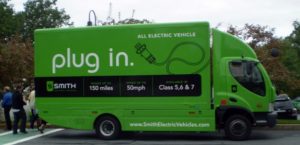 Fleets, freight and logistics companies, and urban transportation planners are looking at best practices for hitting targets in greenhouse gas emissions, air pollution, fuel consumption, and mobility in crowded cities. That will be a discussion topic this week at
Fleets, freight and logistics companies, and urban transportation planners are looking at best practices for hitting targets in greenhouse gas emissions, air pollution, fuel consumption, and mobility in crowded cities. That will be a discussion topic this week at 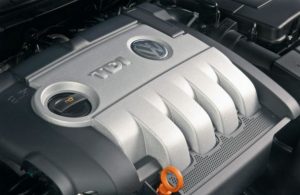 VW deadline extended and company recalling e-Golfs: Volkswagen had its March 24 deadline extended to April 21 to submit its fix for about 580,000 diesel vehicles in its emissions scandal.
VW deadline extended and company recalling e-Golfs: Volkswagen had its March 24 deadline extended to April 21 to submit its fix for about 580,000 diesel vehicles in its emissions scandal. 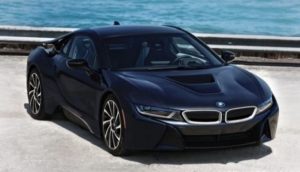 BMW’s next phase: BMW is making a move to reaffirm its top spot as the largest global luxury carmaker with announcements on the iNEXT autonomous electric vehicle, additions to the i3 and i8 models, and more versions of the high-end 7-series sedan and X7 SUV. During BMW’s annual financial press conference, CEO Harald Krueger said the iNEXT will arrive in the next 10 years and will use new sensor technology and powerful software for automated driving. Krueger said it “will set a new benchmark in this area.” The company will soon launch
BMW’s next phase: BMW is making a move to reaffirm its top spot as the largest global luxury carmaker with announcements on the iNEXT autonomous electric vehicle, additions to the i3 and i8 models, and more versions of the high-end 7-series sedan and X7 SUV. During BMW’s annual financial press conference, CEO Harald Krueger said the iNEXT will arrive in the next 10 years and will use new sensor technology and powerful software for automated driving. Krueger said it “will set a new benchmark in this area.” The company will soon launch 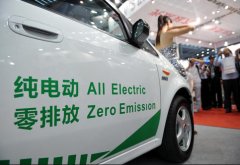 Major feature on China and EVs: Automotive News has researched the
Major feature on China and EVs: Automotive News has researched the 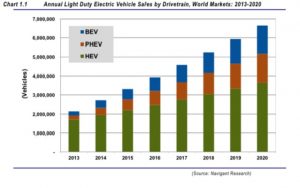 Automakers have understood for years that California, and the overall U.S. market, can’t be depended upon for meeting large-scale sales targets in plug-in electric vehicles. The decline in U.S. sales numbers during 2015 didn’t help, but the overall sales volume had still been small enough for automakers to question their future plans. That’s where global markets have become more important as OEMs look to sell enough volume to justify the resources invested in electric cars through talented employees, R&D, safety and performance testing, marketing spend, and setting up assembly plants to reach economies of scale. That has been the case for Tesla Motors along with its major OEM competitors, which makes China and other overseas markets even more important.
Automakers have understood for years that California, and the overall U.S. market, can’t be depended upon for meeting large-scale sales targets in plug-in electric vehicles. The decline in U.S. sales numbers during 2015 didn’t help, but the overall sales volume had still been small enough for automakers to question their future plans. That’s where global markets have become more important as OEMs look to sell enough volume to justify the resources invested in electric cars through talented employees, R&D, safety and performance testing, marketing spend, and setting up assembly plants to reach economies of scale. That has been the case for Tesla Motors along with its major OEM competitors, which makes China and other overseas markets even more important.